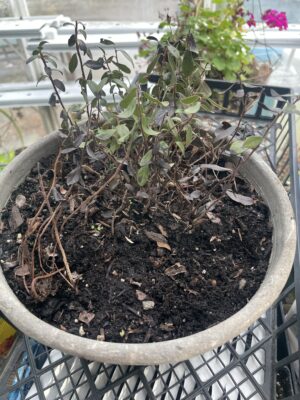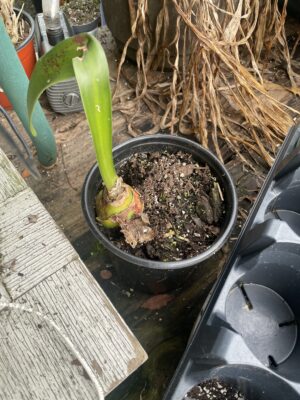When you go to a garden center, the plants look wonderfully healthy and vigorous, so you buy lots of them. But upon taking them home and planting them in your greenhouse or garden, they may gradually begin to fade. First their growth may slow; then they may stop flowering; and finally they may start to look barely surviving. What happened? Where did you go wrong?

Answering this question begins by considering how professional growers raise plants. Since these plants are intended strictly for commercial sale, a look of perfect health is critical. The plants are therefore pampered with exactly the right amounts of water, fertilizer, light, and heat. Any sign of insect infestation gets immediate treatment with either biological controls or insecticides. Consequently, when you take such plants home, the conditions you provide are probably not as ideal. Your new acquisitions may be planted in less than optimum soil and watered and fertilized less optimally than in a commercial greenhouse. Exposure to insects may also become an issue, as may exposure to mice, rabbits, deer, and so forth if planting outdoors. All these things considered, no wonder the garden center’s plant perfection often doesn’t last.

But what can be done to minimize these problems? A major factor to consider is your soil. The soil you’re using must be adequately nutritious for the plants you want to grow, and ensuring this starts well before you buy the plants. For indoor growing, as in a greenhouse, you need to check your potting medium for its organic content, nutrient levels, and water-retaining ability. The best potting soils have high amounts of organic matter, and they also contain vermiculite (to improve water retention) and perlite (to improve drainage). In addition, they may contain mycorrhizae fungi, which attach to roots and help plants take up water and nutrients. Commercial growers use these fungi to get their seedlings very well-established before they are sold.
If you are intending to grow garden-center plants outdoors, you should get a soil test well before you plant anything. This test will tell you if your soil lacks nutrients, is deficient in required elements, has high levels of some undesirable substance, or is simply worn out. If you do this test early enough in spring, or even the previous fall, you may be able to correct problems before the planting season arrives. For example, when plants were not growing well in one part of my garden, a soil test revealed that the nutrient levels there were low. So in the fall, I composted the area with well-rotted manure, seaweed, decaying leaf litter, and grass clippings, on top of which I sprinkled pellets of mycorrhizae fungi. This mix was left to rot down for a few months covered with straw mulch. When the bed was planted in the spring, the results were very impressive. The leeks grew to nearly 3 inches (about 75 mm) in diameter, the onions were huge, and the other plants also grew fantastically well.

Finally, regardless of whether you’re planting indoors or outdoors, a thorough check of your soil requires ensuring that it’s suited to the plants that you are growing. This is because not all plants like the same growing medium. Although most are happy in neutral soils, some (such as rhododendrons and blueberries) favor highly acidic ones, while others, such as brassicas (broccoli, cauliflower, cabbage, etc.) prefer alkaline soils. Getting to know particular plants’ likes and dislikes – regarding soil, moisture, fertilization, and so forth – is a very important part of successful gardening.


